Welcome to an in-depth examination of the tactical prowess of Gian Piero Gasperini and his innovative approach at Atalanta. In this analysis, we will dissect the strategic intricacies that define Atalanta’s style of play under Gasperini’s guidance. Known for their high-intensity pressing, fluid attacking movements, and dynamic midfield play, Atalanta has emerged as one of the most captivating teams in European football. Join us as we unravel the tactical nuances behind Gasperini’s philosophy, exploring how he has transformed Atalanta into a formidable force domestically and on the continental stage.
Build-up
Low Build-up
Gasperini sets his team up in a 4-2-4-1 formation in the low build-up, with the goalkeeper playing between the center-backs.
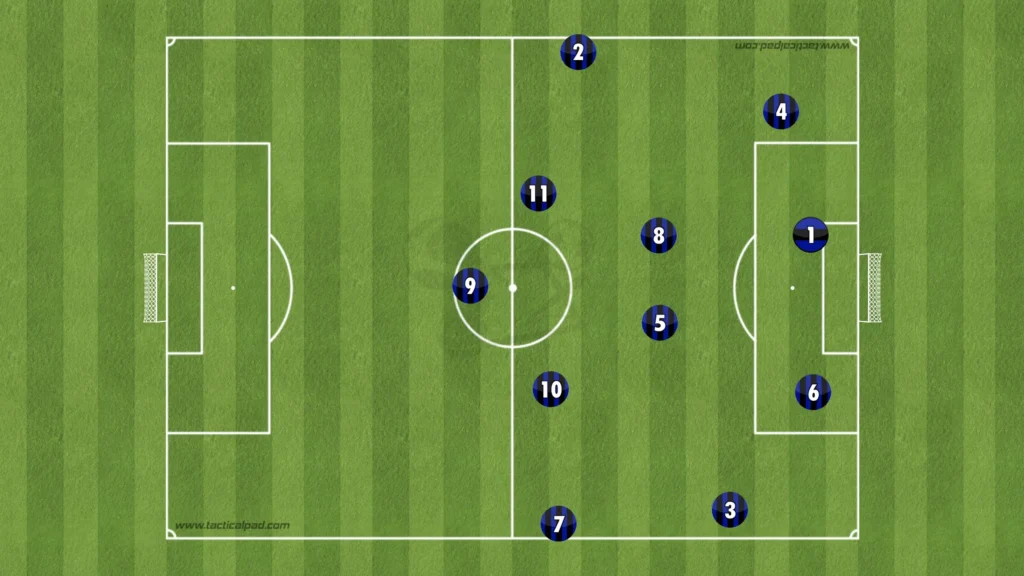
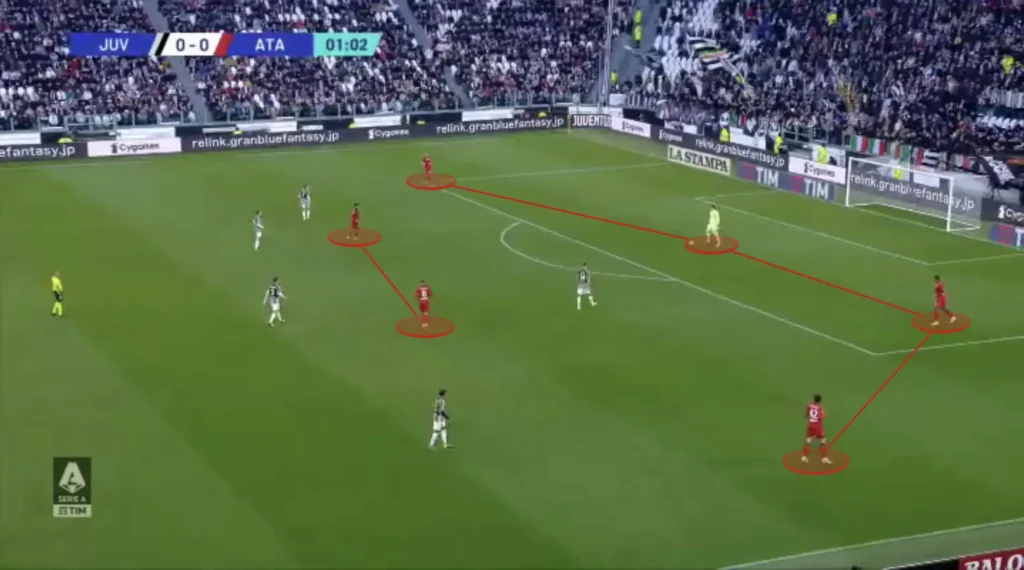
Atalanta often go long in their low build-up, using their physical attackers to win the first and second balls.
High Build-up
Gasperini sets his team up in a 1-3-4-3 formation in the high build-up, with a back-three, two holding midfielders, two wingbacks, and three up front.
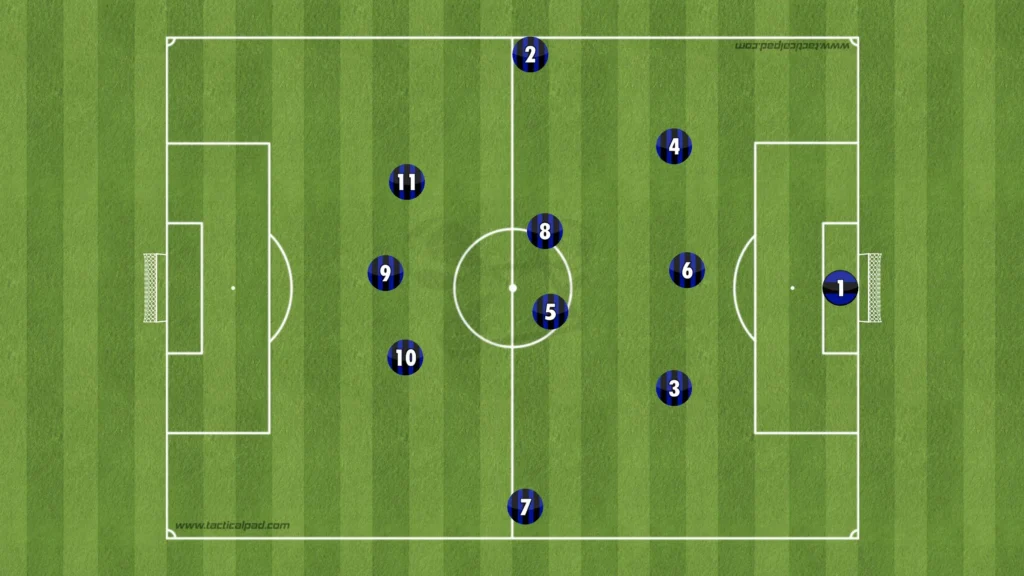
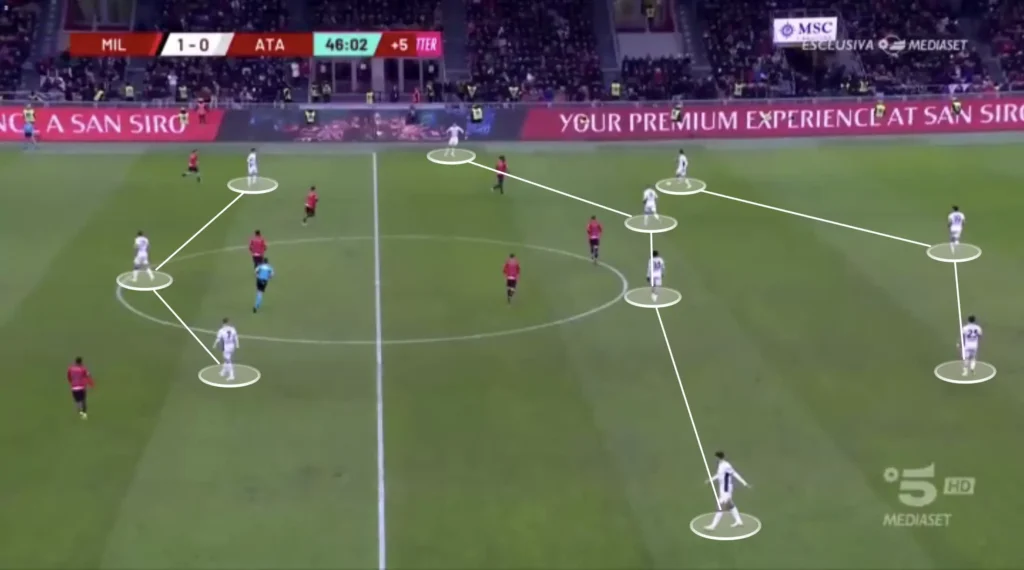
The attacking midfielders usually stay high and centrally, close to the striker, looking to overload the opposition’s center-backs.
Dropping the Midfielders
The holding midfielders often drop into the backline during the build-up. When they do this, the wide center-backs push out, and the wingbacks push up, usually creating numerical advantages in the wide areas. The midfielders dropping can also draw out opposition players, opening more space in the midfield for other Atalanta players.
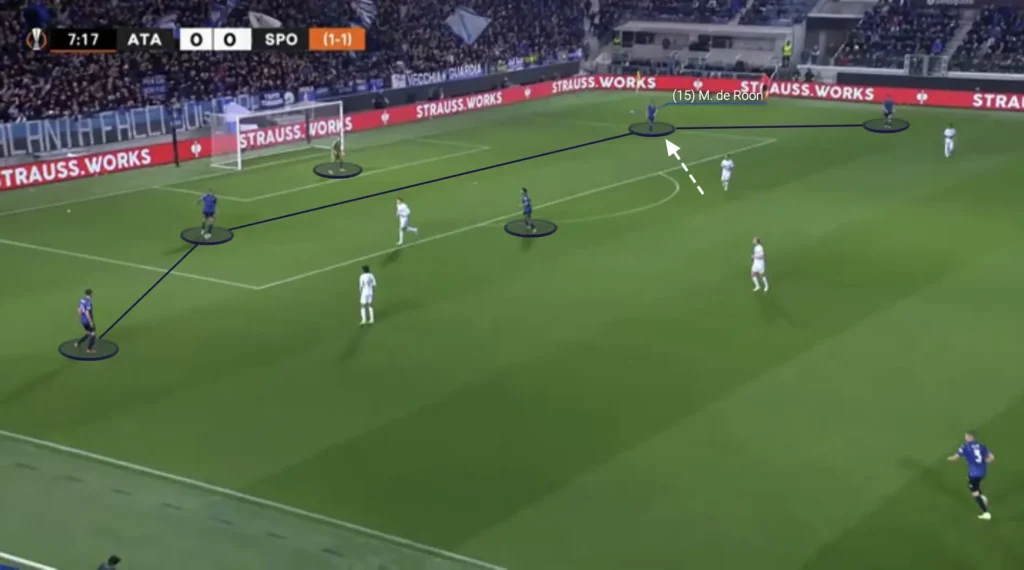
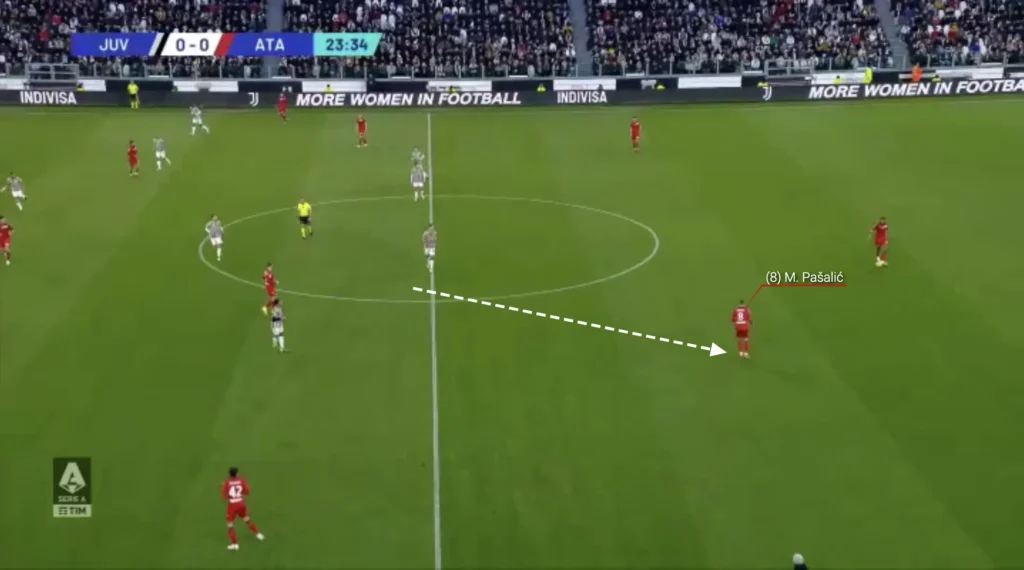
The attacking midfielders mainly stay high in the build-up, which means that a massive space in the middle opens up when the holding midfielders drop. Atalanta will almost be positioned in a circle, without any players in the middle. They will mostly play on the wings when progressing the ball because of their lack of central options.
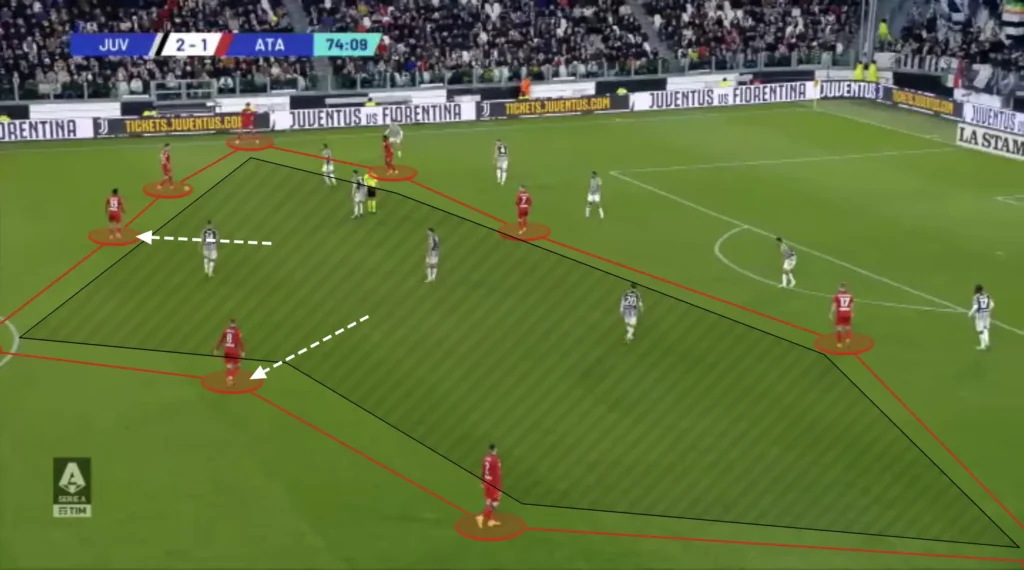
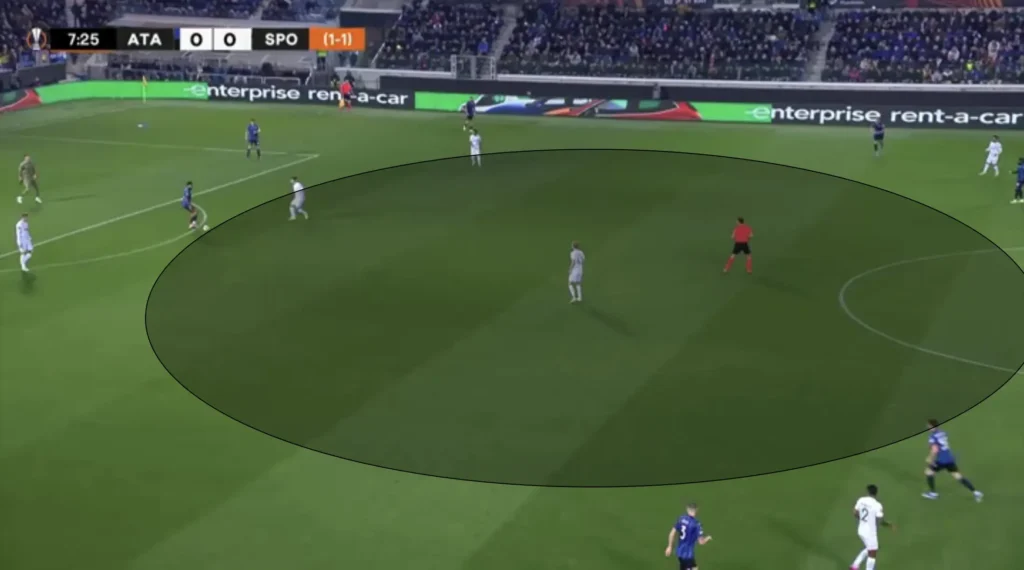
Center-backs Joining the Attack
Atalanta are good at incorporating many players into the attack and creating numerical superiorities in the final third. One way that they do this is with offensive runs from the center-backs. The wide center-backs often make underlapping runs, creating questions for the opposition and more unpredictability in attack.
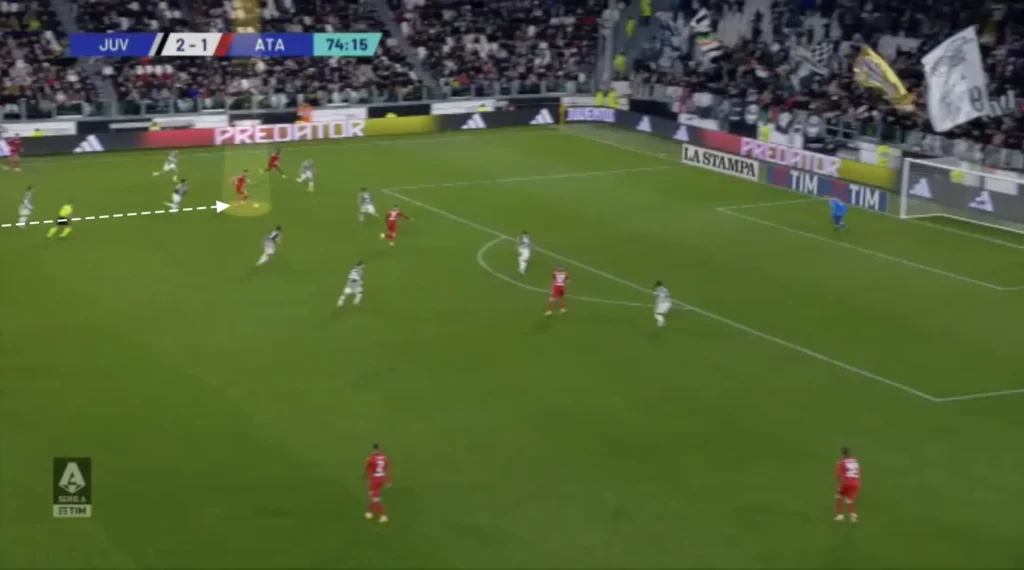
Opening spaces in the midfield allows the center-backs to make runs into these spaces. This often catches out lazy wingers who are not defending, giving the center-backs the space and time to receive and progress the ball.
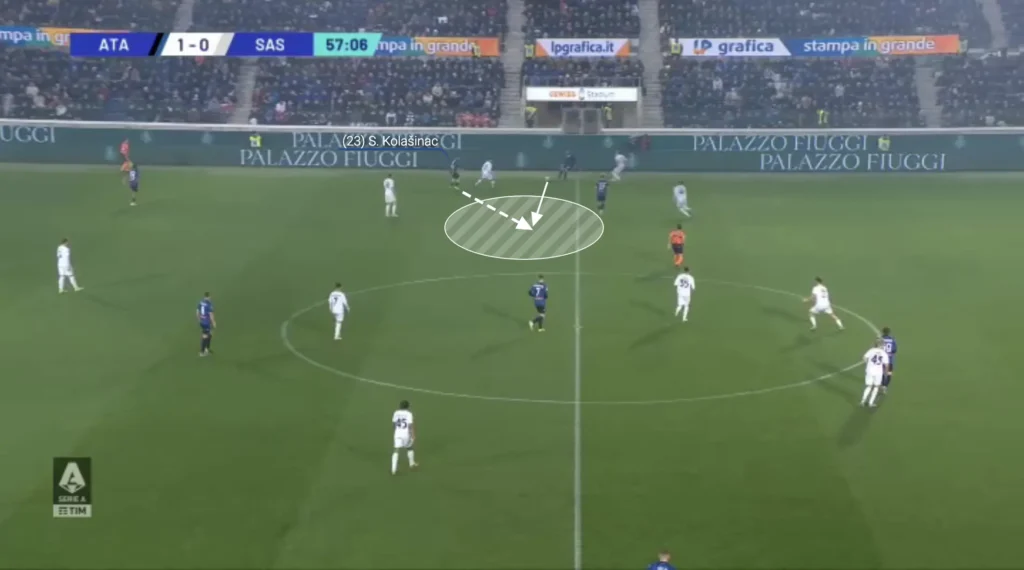
Final Third
Attacking the Half-Space
Atalanta is a good team in the final third. They create many chances, mainly by attacking the space between the opposition center-back and fullback. They primarily do this from the wide areas with underlaps from midfielders or sometimes the wide center-backs.
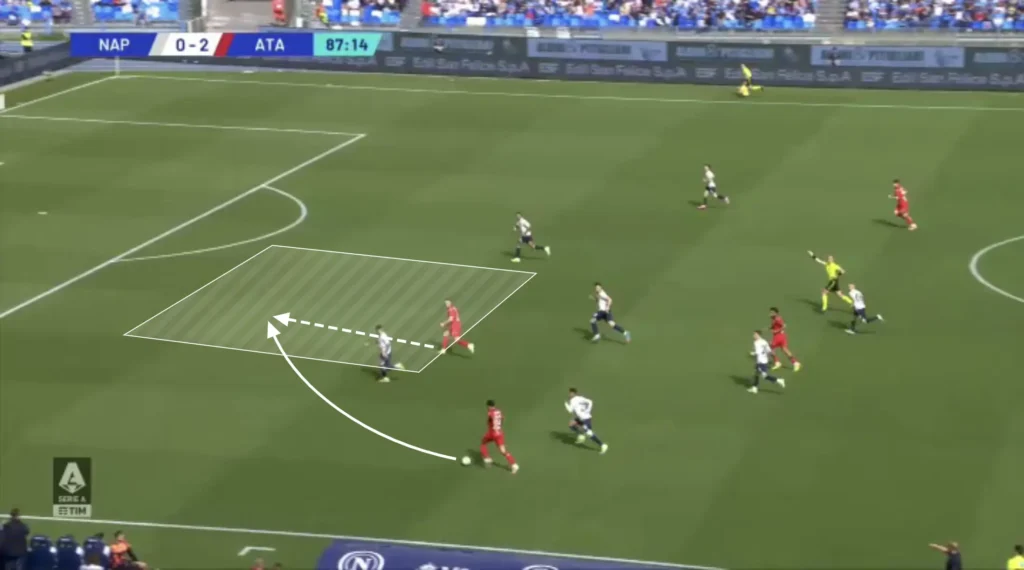
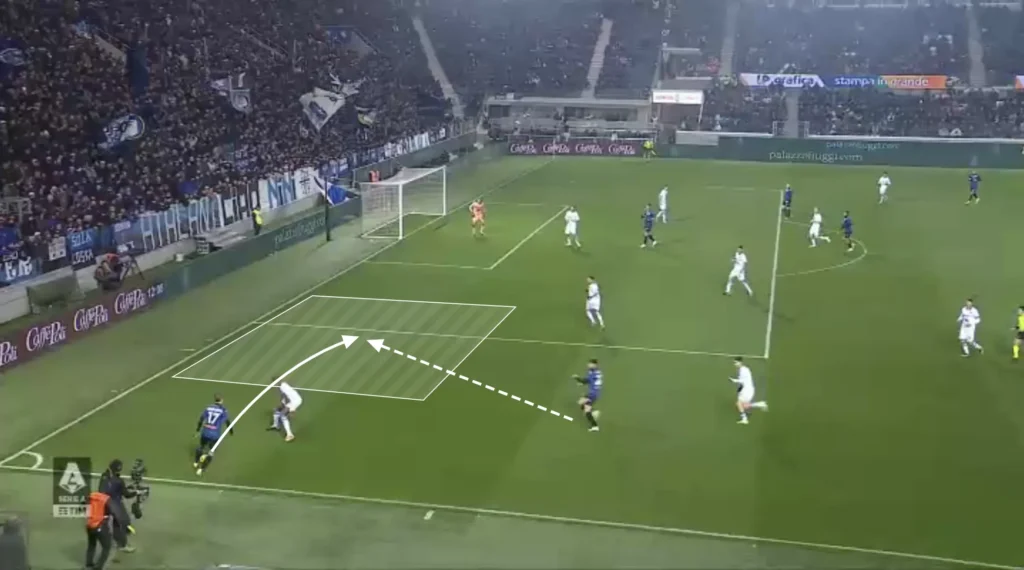
Many Players in the Box
The attacking midfielders and wingbacks always look to make runs into the box when the ball is in the final third, often getting four or five players into these areas to create overloads. The numerical advantages in the box force the defending team to make decisions and leave some players open.
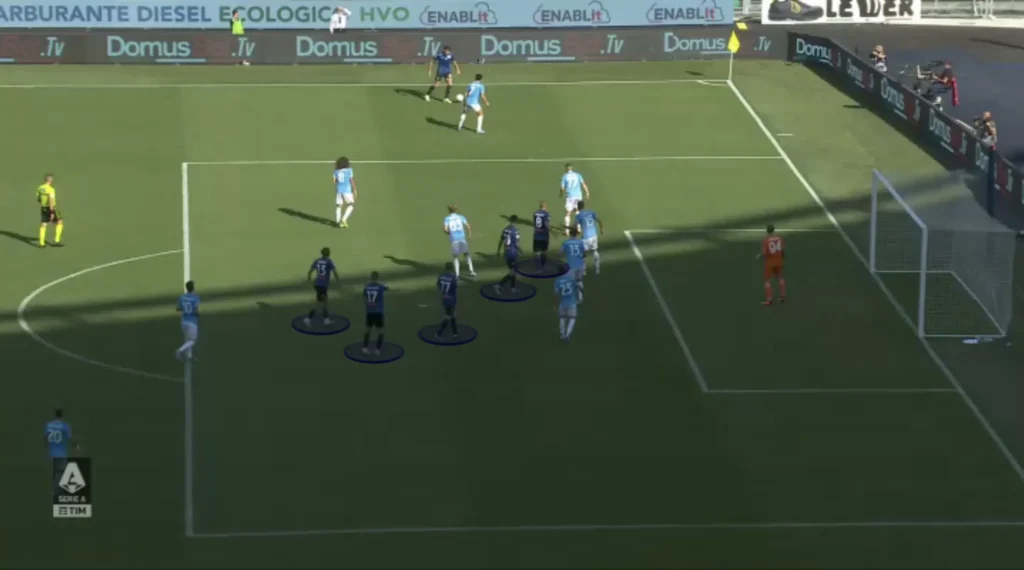
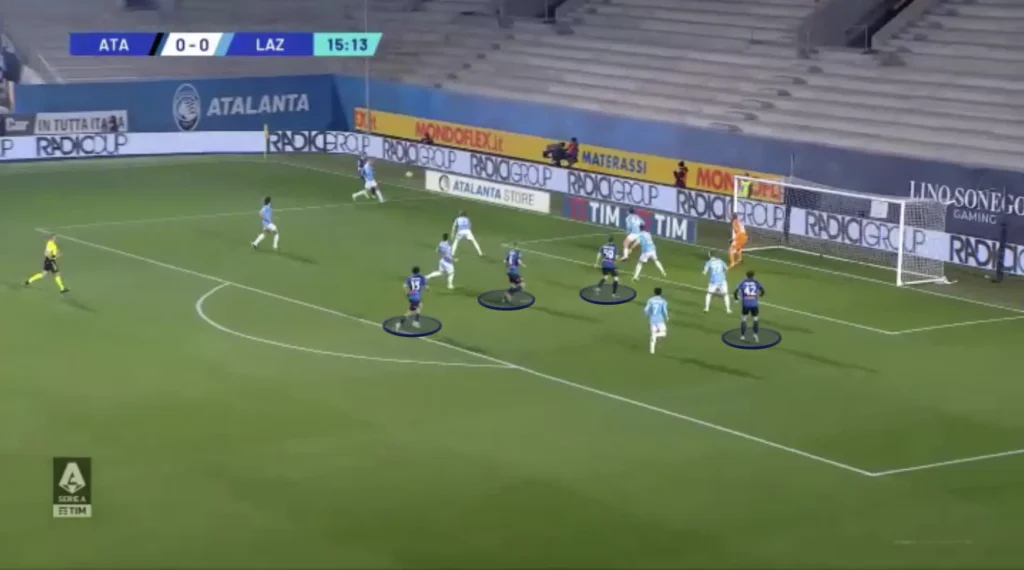
Atalanta score many of their goals from crosses to the wingback at the back post. The opposition fullback will often be preoccupied with an Atalanta attacking midfielder, which leaves massive space at the back post for the wingback to attack.
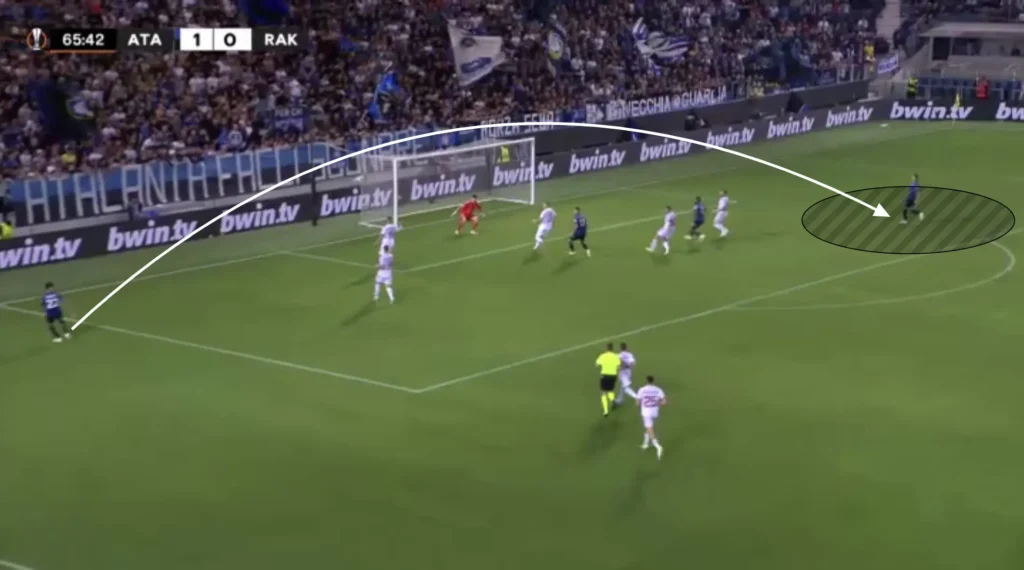
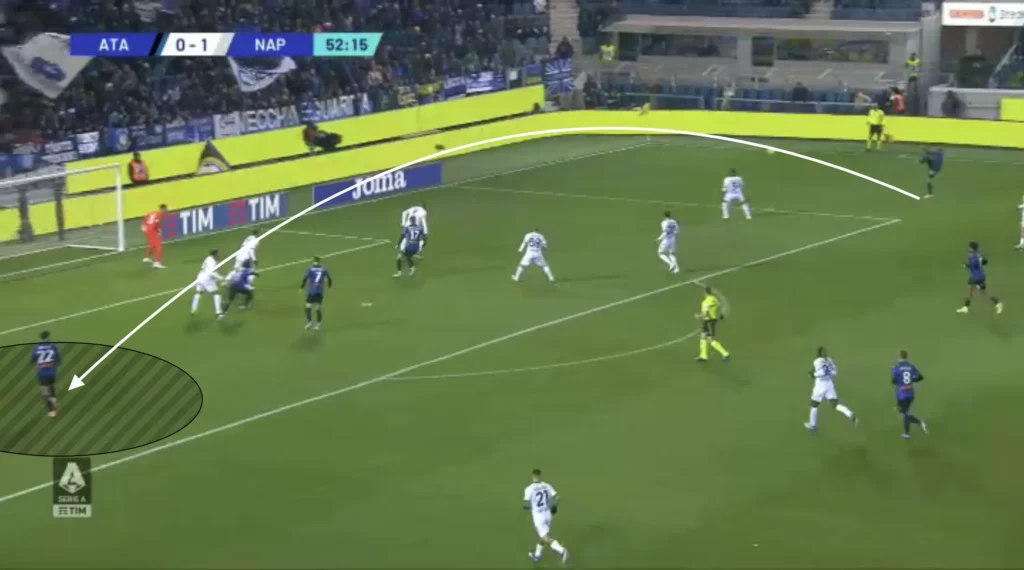
Gasperini also positions many Atalanta players outside the box, ready for the second balls and cut-backs. They always succeed in pushing down the opposition’s defense, which opens the space in front of the backline. Atalanta often find their midfielders in these spaces, who can shoot or combine with an attacker to create goalscoring opportunities.
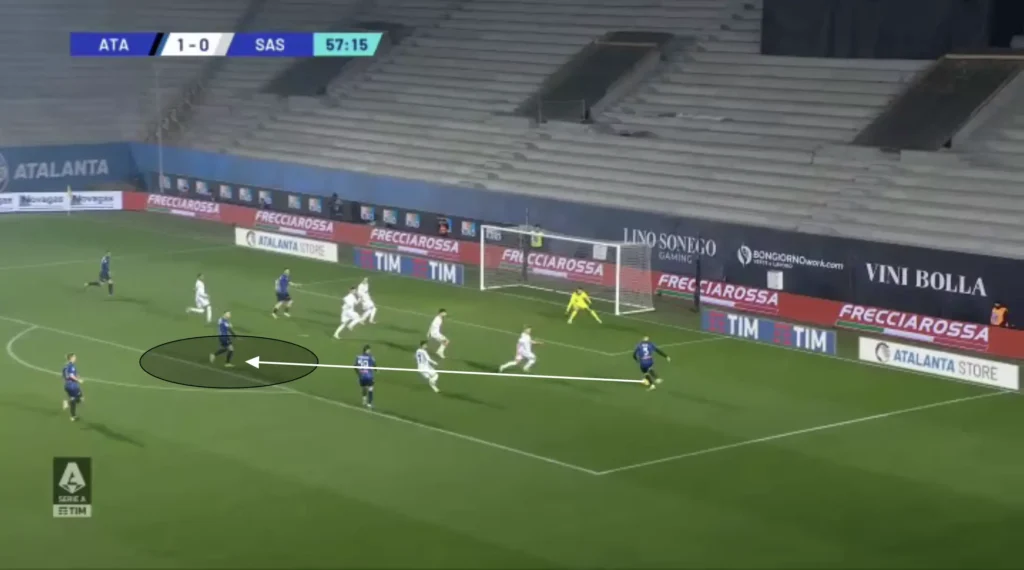
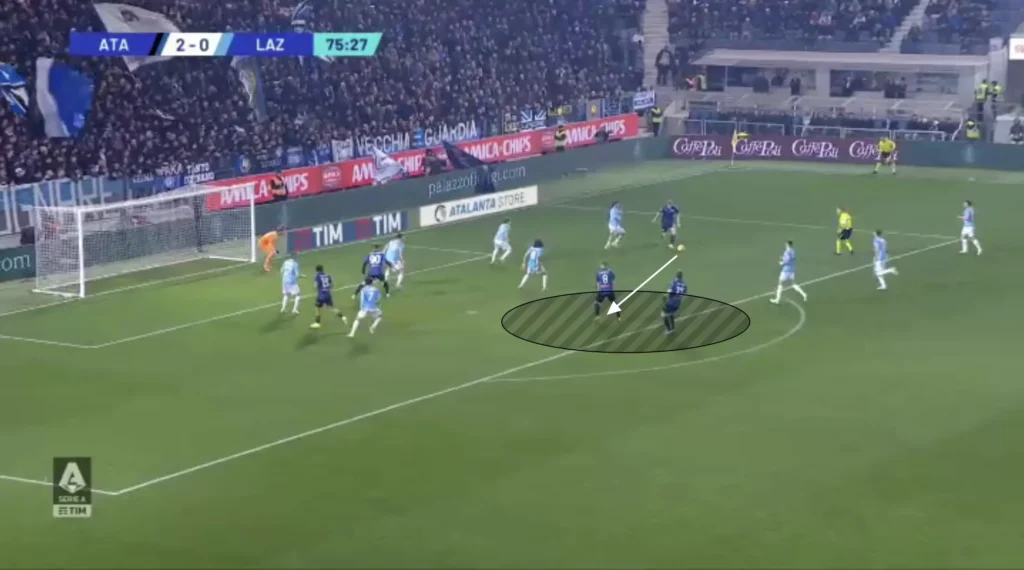
Defending
Man-to-Man
Gasperini’s Atalanta defends in a man-to-man system all over the pitch. Everyone has an opposition player they are responsible for marking, which makes it difficult for the opposition to find open players. When recruiting players, Atalanta make sure to sign players who are good at defending 1v1 situations because of their man-to-man defending. Atalanta’s defensive setup is arguably their greatest attacking threat, scoring many goals from winning the ball when defending.
They use the man-to-man defending setup in both the high press;
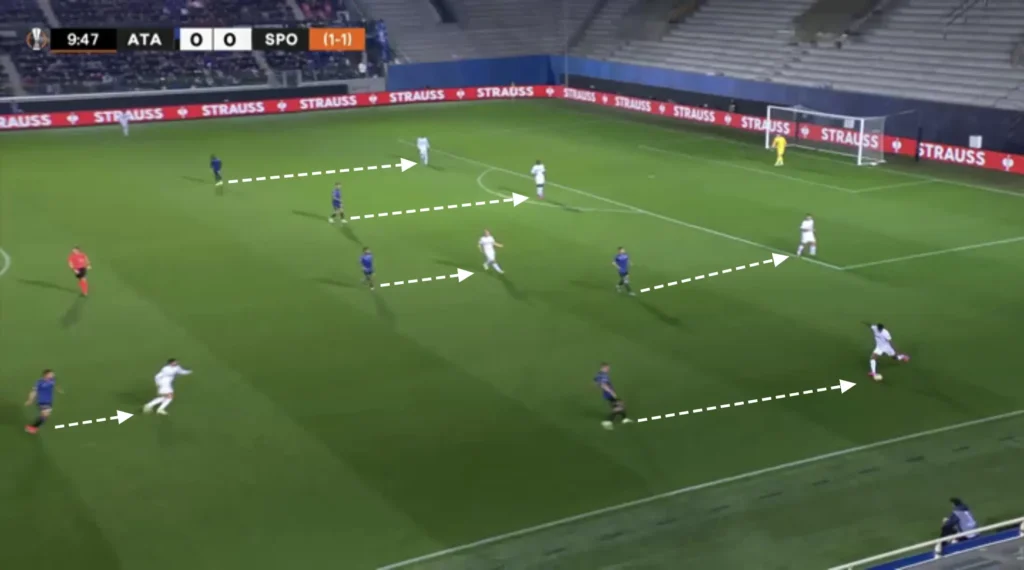
And in the lower press:
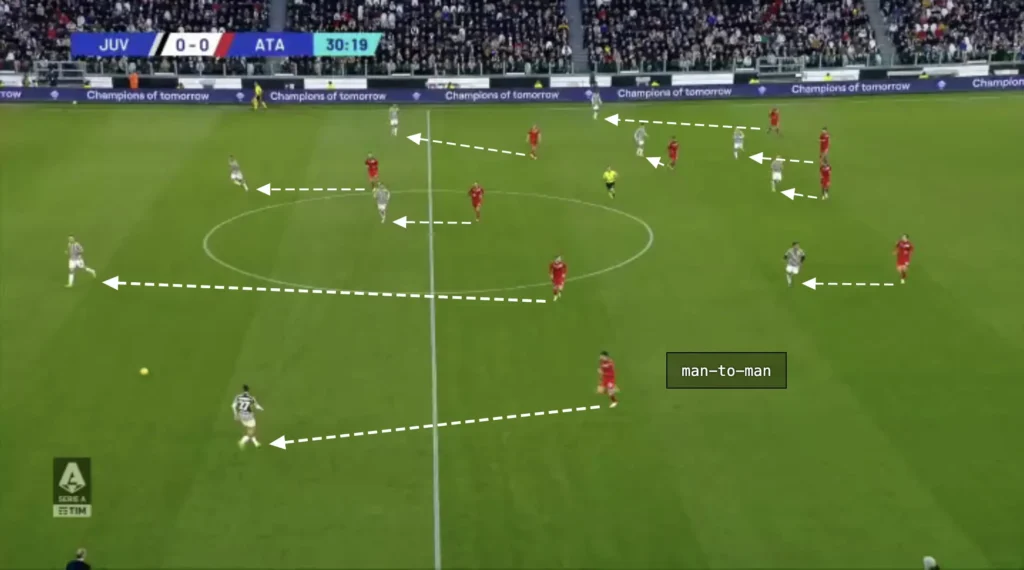
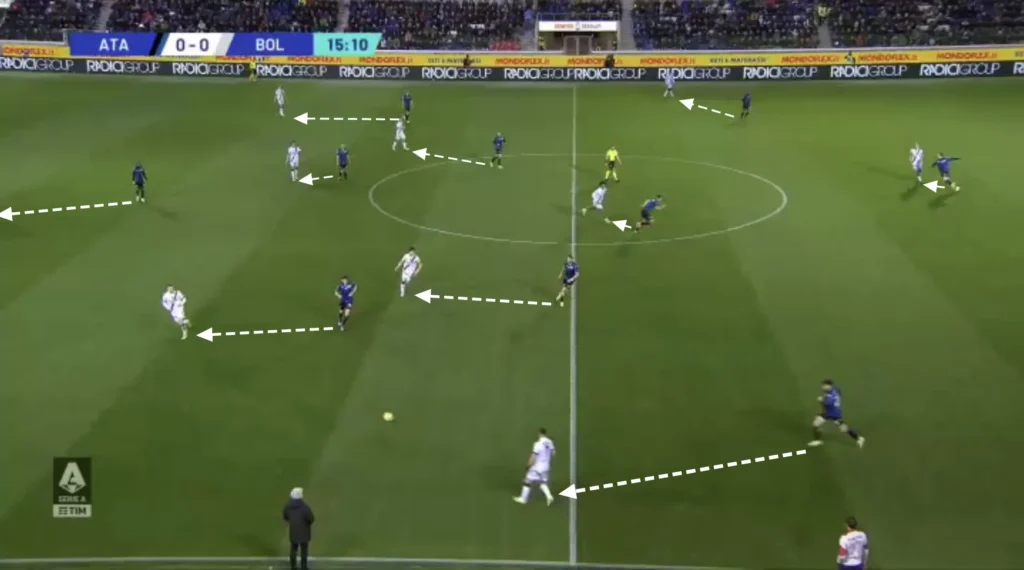
Distance Marking
In a man-to-man system, it becomes crucial that the players on the opposite side from where the ball is do not continue to mark the opponent they initially were responsible for. The pass from one side to the other is difficult to make, and the defender will have a lot of time to move across and win the ball if the pass comes. This means they do not need to mark their player as closely. They can instead come in and help create numerical superiorities in the center, decreasing the risk of dangerous 1v1 situations. The Atlanta players will always have an opposition player they are responsible for, however, they will never be closer to them than they need to be.
Here, the Atalanta forwards have dropped, not being very close to the opposition player they are marking.
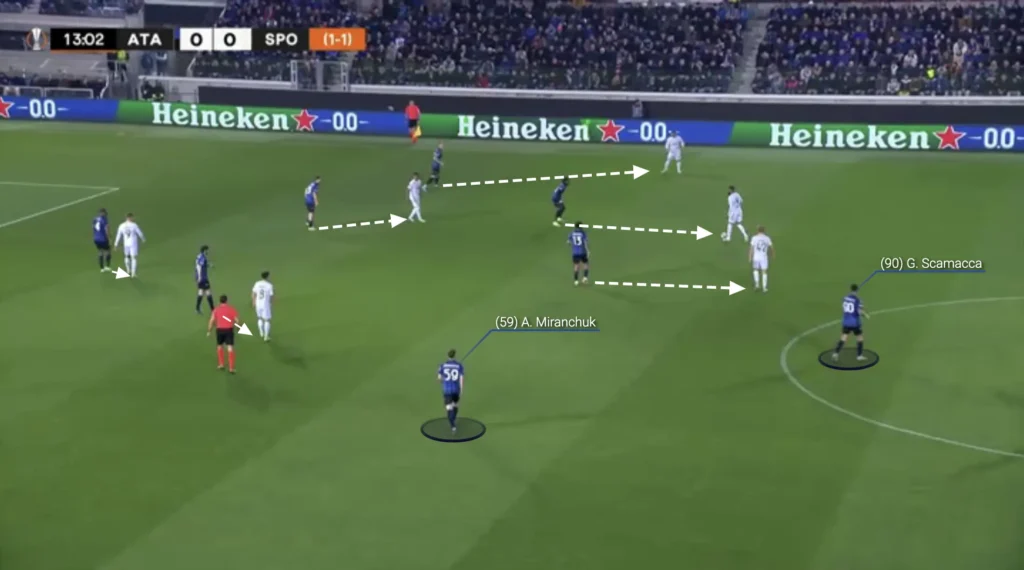
Here, the weak-side wingback has come inside, away from his player, to help the defenders with the opposition forwards.
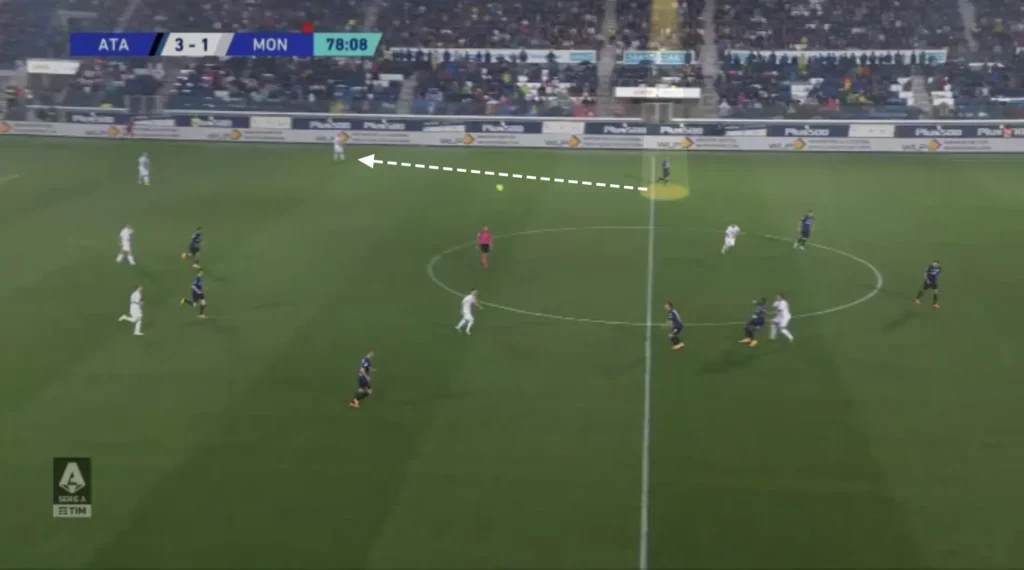
Squeezing the Pitch
Atalanta looks to squeeze the pitch when defending. This means constantly pushing the team up as much as possible. Every time the opponent plays a slow, sideways pass or a back pass, the Atalanta player man-marking the opposition player who receives the ball pushes up. When this happens, the rest of the team has to follow to stay compact. When the next pass comes, the next player pushes up, forcing the opponent back even more. They do this because it forces the opponent further from Atalanta’s goal, making it harder to create chances. Squeezing the pitch when possible is crucial for teams who do not necessarily look to always be in possession.

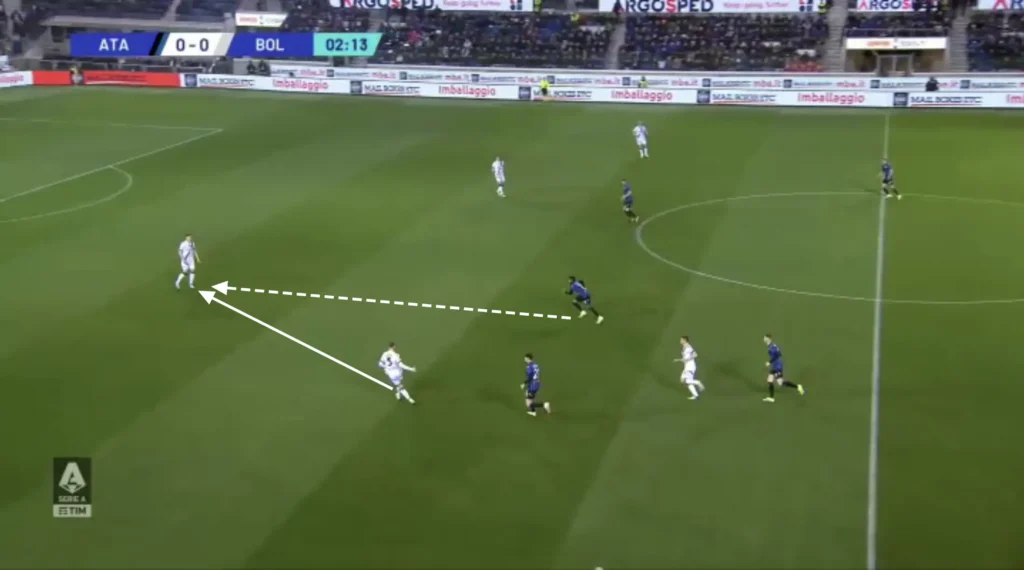
Offensive Transitions
Gasperini wants his team to counterattack in their offensive transitions. They do this with a high tempo, mainly attacking the spaces between the center-backs and fullbacks. They often win the ball high up in the high pressure, and when they do, they immediately counterattack. In addition, due to the man-to-man system, they have many players high up when defending. This enables them to incorporate more players into the counterattacks.
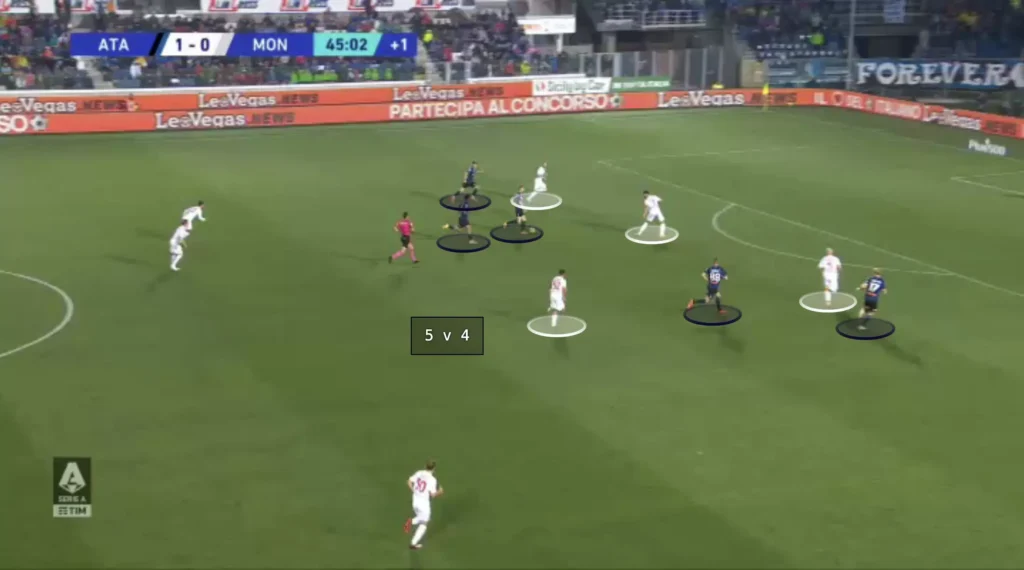
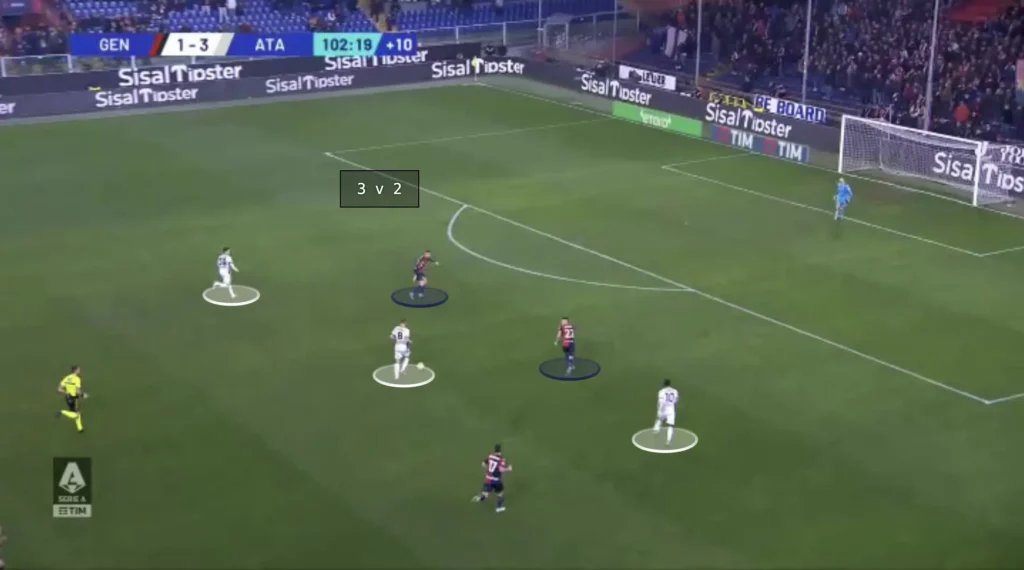
Weaknesses
The man-to-man system is very demanding. It forces the players to constantly know where the opponents are, which often may cause confusion. If the opponents are fluid and rotate a lot, the Atalanta players have to switch players. Atalanta are usually great at this and perform these switches smoothly. However, it requires constant focus and communication, and when they inevitably make mistakes, opposition players become very open, which could be exploited.
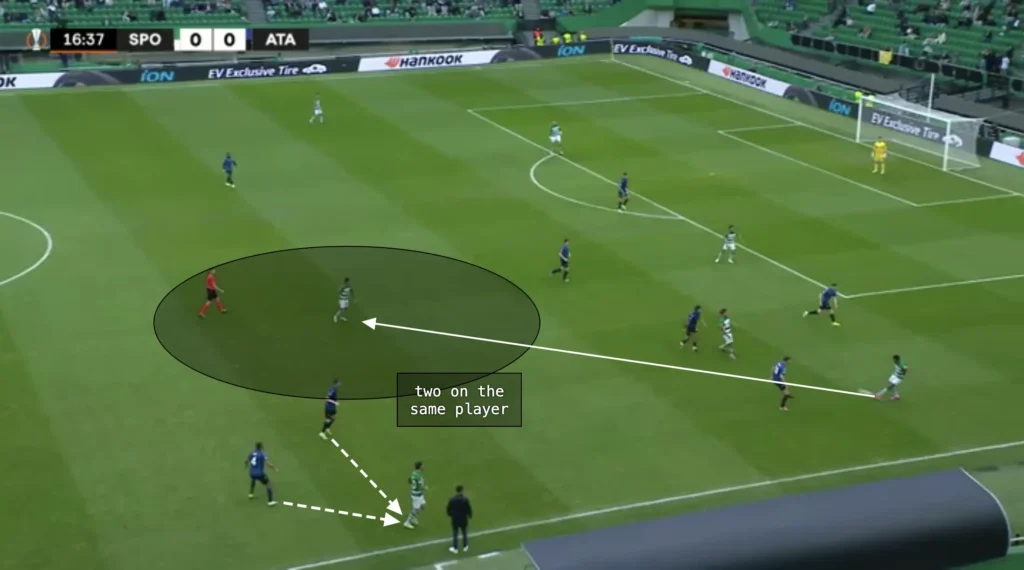
When Atalanta get played through, the opposition will have a lot of space to attack. The backline will be far apart, and the space in behind will be huge. Balls exploiting these spaces become very dangerous and a constant threat. Atalanta often get caught out in this way by fast-attacking teams who attack them with a direct approach.
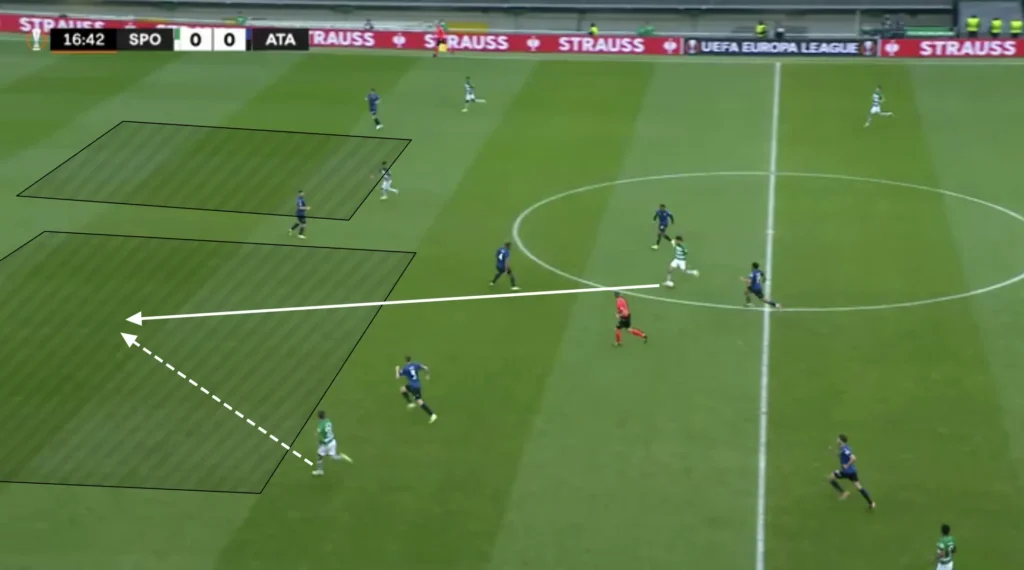
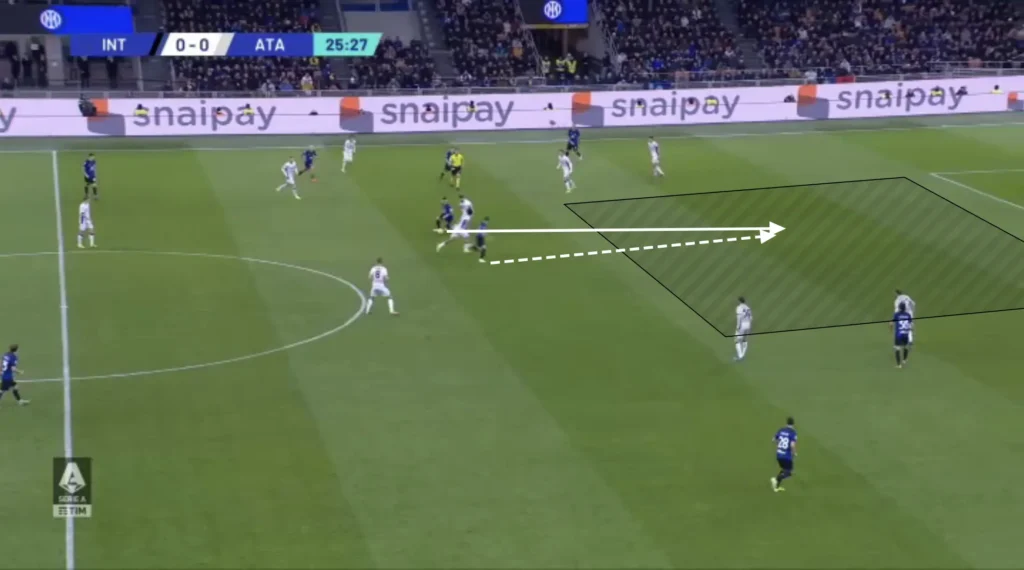
When the balls get played in behind the Atalanta backline, the Atalanta players sometimes struggle to get back before the opposition attackers. They defend so close to the opposition players that fast attackers often arrive in the penalty area before the Atalanta defenders.

Final Thoughts
In conclusion, this tactical analysis of Atalanta under Gian Piero Gasperini offers a glimpse into the intricate workings of one of the most captivating teams in European football. Gasperini’s innovative approach, characterized by fluid formations, relentless pressing, and attacking prowess, has transformed Atalanta into a formidable force on the pitch. As Atalanta continues to make waves domestically and in continental competitions, this analysis underscores the significance of Gasperini’s tactical philosophy in shaping the club’s success and cementing its reputation as a team to be reckoned with in modern football.
